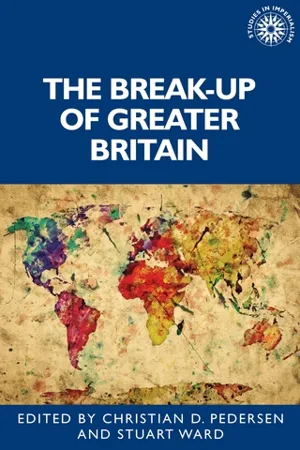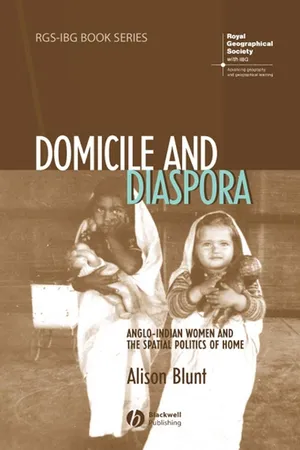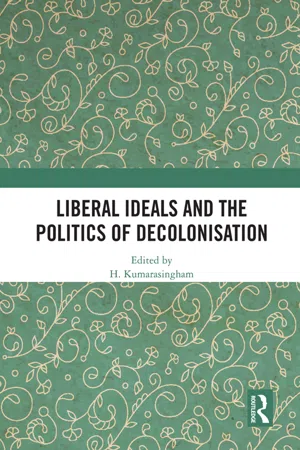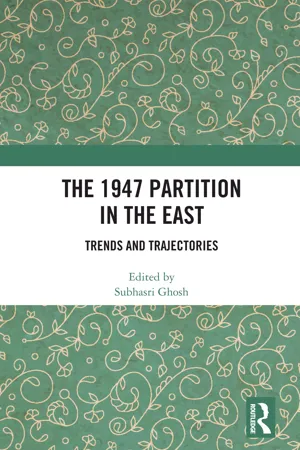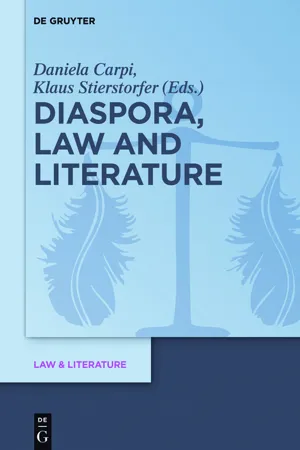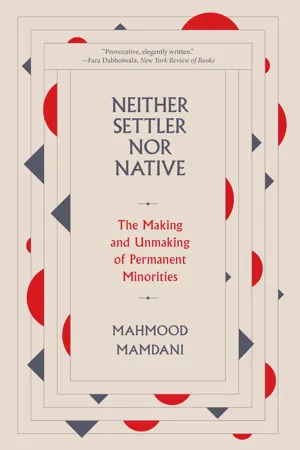History
Indian Citizenship Act of 1924
The Indian Citizenship Act of 1924 granted citizenship to all Native Americans born in the United States. This was a significant step in recognizing the rights of Native Americans and their inclusion as citizens of the country. The Act aimed to address the long-standing discrimination and lack of citizenship rights for Native Americans.
Written by Perlego with AI-assistance
Related key terms
7 Key excerpts on "Indian Citizenship Act of 1924"
- eBook - ePub
- Stuart Ward, Christian Pedersen, Andrew Thompson(Authors)
- 2021(Publication Date)
- Manchester University Press(Publisher)
Where scholars have dealt with the provisions of the 1955 Act, this is almost always in comparison with the later amendments made in the context of ‘illegal immigrants’ in the 1980s. 23 Anupama Roy recognises the period between 1950 (when the constitutional provisions regarding citizenship came into effect) and 1955, when the Citizenship Act was adopted, as a ‘liminal space’ creating ‘awkward’, ‘transitional’ and ‘aspiring’ citizens, however, she views this solely from the lens of Partition and movement across the India–Pakistan borders. 24 Moreover, she does not ask why it was that such a liminal space was created or why the Indian Citizenship Act took so long to come into effect. As I will show, this delay was very much due to the struggle to disentangle identities shaped by empire and reconcile the Indian Citizenship Act with the provisions of the BNA. Having failed to devise a precise legal framework for the provision of Indian citizenship two years after independence, Indian ministers and officials increasingly stressed the urgency of the matter. On 18 August 1949, K. V. K. Sundaram, Secretary of the Ministry of Law, circulated a draft Indian citizenship bill to the ministries of External Affairs, Home and Law, urging that ‘no time should be lost in finalizing’ such an important piece of legislation. 25 Sundaram’s draft was faithful in its reiteration of ‘reciprocity of citizenship’ that underpinned India’s membership of the Commonwealth. Closely following the ‘important provisions of the British Nationality Act 1948’, his draft declared that every person who ‘under this act is a citizen of India or who under the citizenship law in force in any Commonwealth country is a citizen of that country’ would be recognised in India as having the status of a Commonwealth citizen - eBook - ePub
Domicile and Diaspora
Anglo-Indian Women and the Spatial Politics of Home
- Alison Blunt(Author)
- 2011(Publication Date)
- Wiley-Blackwell(Publisher)
49Despite such claims that Anglo-Indians belonged in India and would serve an independent government as loyally as they had served an imperial government, many Anglo-Indians left the subcontinent soon after Independence. Although this article viewed British paternal ancestry as lost in the ‘dim past’, and Anglo-Indian loyalty to the Indian motherland as paramount, the figure of a British paternal ancestor became increasingly prominent under the requirements of the British Nationality Act.Documenting Paternity and Recolonizing IdentityThe British Nationality Act of 1948 was, according to Ian Baucom, ‘the last major piece of legislation that sought to assert the global dimensions of Britishness’.50 Passed under Clement Attlee’s Labour Government in response to the establishment of Canadian citizenship in 1946, the Act meant that ‘British subjecthood was to be acquired in future only as a consequence of citizenship of a member state of the Commonwealth’.51 Kathleen Paul writes that the Act was an attempt to shore up British imperial power at a time of decolonization, and ‘succeeded in satisfying the varying expressions of nationalism throughout the Commonwealth while preserving the common status of British subjecthood’.52 Nevertheless, according to her, the experiences of different ‘communities of Britishness’ migrating to Britain show that, despite such claims for commonality, British subjecthood was differentiated and white Britishness was privileged.Although the Act ‘created the conditions that facilitated a mass migration of New Commonwealth citizens to the United Kingdom’ and ‘was the legal framework within which multicultural Britain emerged’, Randall Hansen argues that neither of these consequences was anticipated in 1948.53 The Act restated the situation that existed prior to 1948 and was passed at a time when large-scale migration from the empire and commonwealth seemed unlikely. But the arrival of the Empire Windrush from Jamaica in June 1948 at the very time that the British Nationality Act was passing through parliament ‘sparked a crisis within the Labour Government which . . . highlighted the existence of competing communities of Britishness and revealed the ideal of a single universal British national identity to be nothing more than a fac¸ade’.54 Unlike the familial imagery used to describe the ties between white British residents of the metropolis and the old Dominions, and the potential Britishness of European refugees and Irish migrants, non-white British subjects were seen as less likely to assimilate into a domiciled Britishness, in part because of racial prejudice against intermarriage and miscegenation.55 Although the Act maintained British subjecthood across the empire and commonwealth, its racialized differentiation became starkly apparent when non-white British subjects migrated to Britain. As Spencer writes, ‘within two years of the extravaganza of imperial sentiment that flowed during the debate on the Nationality Act, its authors were discussing whether and how the right to emigrate to Britain as exercised by black British subjects could be legally curtailed’.56 This legal curtailment was put in place by the Commonwealth Immigrants Act of 1962, which limited the right of entry because all Commonwealth citizens seeking employment in Britain had to qualify for an employment voucher.57 - H. Kumarasingham(Author)
- 2020(Publication Date)
- Routledge(Publisher)
Imperial Citizenship or Else: Liberal Ideals and the Indian Unmaking of Empire, 1890–1919 Mark R. FrostIn November 1954, Henry Hopkins, the British Colonial Secretary, remarked during a House of Commons debate:ABSTRACT
This article examines three connected campaigns for Indian imperial citizenship which spanned the period 1890 to 1919, and their impact on the emergence of radical South Asian anticolonialism. It shifts our focus from individuals and ideologues who sought the status of British imperial citizens, to address the agitations which commenced to attain such a status within a reconstructed British Empire. Specific attention is paid to the conditions which encouraged South Asian patriots to imagine that the ideal of equal imperial citizenship within an imperial federation was a feasible political objective, to the illiberal official retreat from such an ideal, and to the political ramifications of this retreat. In conclusion, this article argues that the quest for Indian imperial citizenship, which spanned the Empire from South Africa to Canada, has been a much-neglected chapter in the evolution of anti-colonial nationalism in South Asia which deserves to be reinserted in the grand meta-narrative of the region’s twentieth century history.In a world in which restrictions on personal movement and immigration have increased we can still take pride in the fact that a man can say Civis Britannicus sum, whatever his colour may be, and we take pride in the fact that he wants and can come to the mother country.1Six years earlier, the new British Nationality Act of 1948 made explicit the rights of ‘citizens of the United Kingdom and Colonies’ and new ‘Commonwealth Citizens’ to enter and settle in their ‘mother country’.2 Such rights had theoretically long existed. As the Lord Chancellor reminded Parliament when it debated the 1948 Act, a British subject (when in Britain, at least) could already enter and depart the country at any time, qualify for the franchise, become a member of the Privy Council or of Parliament, join the Civil Service (except in wartime and certain other circumstances) and ‘own a British ship’.3 Yet, it was only with the same Act’s introduction that subjecthood entered the statute book as officially signifying citizenship. As Britain withdrew from its former colonial possessions, the declaration of current and former subjects as British citizens made political and economic sense. Immigrants who could claim Civis Britannicus sum, it was thought, would solve Britain’s post-war labour shortage while at the same time shoring up the unity of the nascent Commonwealth from which many would arrive.4- eBook - ePub
Understanding India's New Political Economy
A Great Transformation?
- Sanjay Ruparelia, Sanjay Reddy, John Harriss, Stuart Corbridge(Authors)
- 2011(Publication Date)
- Routledge(Publisher)
interim measures on the path to a society in which greater social equality and processes of secularization would eventually lead to the universalist norms of citizenship becoming firmly entrenched.The conception of national identity on which the Indian idea of citizenship rested was actually quite amorphous,7 which may explain its fragility in the face of the first systematic attempt to give concrete shape to the nation, viz. the project of Hindutva. This finds reflection in the political discourse of the early years after independence, in the ironic but unmistakable resemblance between the qualities attributed to, on the one hand, the Congress Party in the nationalist movement, and carried over into the Indian nation after independence, and, on the other, the features attributed to Hinduism. The adjectives employed (rightly or wrongly) to describe the Hindu religion – absorptive, assimilative, accommodative, eclectic, tolerant – were treated as accurate descriptions of society itself, and therefore as attributes of the ‘umbrella’ nationalist party that claimed to represent all its members.Universalist citizenship conceptualized as national-civic identity was complemented by the constitutional vision of social citizenship, expressed in the welfare-orientation of the state, which assumed primary responsibility for development. In addition to the fundamental rights of citizens (interpreted generously by the Courts), the Directive Principles of State Policy, though non-justiciable, provided the framework for a just and egalitarian society.In sum, then, the Indian citizenship regime c.1950 conceptualized the individual as the basic unit of citizenship, whose inclusion in the polity was on equal terms with every other citizen. Groups and cultural communities found recognition in the form of special compensatory provisions, but they were not in the first instance viewed as the locus of the primary membership of the individual; nor were they recognized as the mandated mediators of group interests vis-à-vis the state. In terms of the substance of citizenship rights, these were interpreted comprehensively and expansively, even if the state capacity to provide these was wanting. However, the state remained not only the locus of the primary loyalty of the citizen, but also the agency entrusted with maintaining and upholding the citizenship regime. - eBook - ePub
The 1947 Partition in The East
Trends and Trajectories
- Subhasri Ghosh(Author)
- 2021(Publication Date)
- Routledge India(Publisher)
While Pakistan and the Muslim League leadership envisaged itself as a theocratic state which claimed Islam to be the State religion, 6 India, imagined itself as a secular state where the state would not have any religion as its own. 7 Both these imaginations also shaped the construction of citizenship within their respective dominions in theory. But beyond the idealism and philosophy, the politics and the experiences of the people at the grassroots manifested itself in a violent partition of the subcontinent and, in turn, had a deeper impact on the construction of citizenship in post-colonial India and Assam over more than seven decades, reaching a recent crescendo during the just concluded process for enrolment of the National Register of Citizens, 2015–2019 and the notification of the Citizenship (Amendment) Act, 2019 in January 2020. Engagement with the violent history of partition of the subcontinent, the large-scale displacement of minorities who found themselves on the wrong side of the border and questions about the citizenship of the displaced/refugees have been lingering concerns cutting across party lines since 1947 which the powers that appears to have persisted despite the claims made in the latest amendment. This article seeks to interrogate the historical background of this assertion. Burden of Partition: legislating a difficult reality With Partition of India, as interprovincial borders of colonial era became international boundaries, perceptions about population migration also underwent a change. Inter-provincial migration which was easy and mostly unrestricted became restricted by the legal regimes governing international population movement, which post-colonial India attempted to negotiate through a labyrinth of debates, legislations and subordinate legislations - eBook - ePub
- Klaus Stierstorfer, Daniela Carpi(Authors)
- 2016(Publication Date)
- De Gruyter(Publisher)
Although the first Prime Minister of India did try to keep the diaspora in mind, the fledgling nation could not fulfil its promise of granting Indian citizenship to its far flung diaspora, which by then had been offered the British Commonwealth Citizenship. By accepting this citizenship the diasporics lost their right to Indian citizenship as the Indian Citizenship Act of 1955 declared that anyone who had “voluntarily acquired the citizenship of another country [should] cease to be the citizen of India.” Nehru then urged the Indians abroad to “identity themselves with and integrate in the mainstream of social and political life of the country of their domicile.” 719 When the Indian diaspora was expelled from Uganda and put under pressure in Kenya in the 1970s, the Indian government then under the leadership of Prime Minister Indira Gandhi, did not extend political support to them. 3. Post-Imperial Migration In the post-Imperial period beginning with the late 1940s and well into the 1980s, Indian labourers and professionals who went to work in the old Imperial centre, i. e. Britain, or in the Commonwealth, i. e. Canada, Australia, New Zealand, or in other parts of the world, mainly the USA and the Arab Gulf countries, did so under the immigration laws of those lands and received little or no support from the Indian government in case of exploitation or oppression by their employers or racist attacks by the general populations of their host lands - eBook - ePub
Neither Settler nor Native
The Making and Unmaking of Permanent Minorities
- Mahmood Mamdani(Author)
- 2020(Publication Date)
- Belknap Press(Publisher)
Yet, over time, the United States managed to bring citizenship into line with the two-state system. Notably, the allotment acts that were essential to the crystallization of the reservation system—the two-state solution—were also citizenship measures. But what must be recognized is that few Indians were granted citizenship on the same terms as whites. The federal government invented new forms of legal status and called them citizenship, but true citizenship has always eluded American Indians on reservations.Taney was out of step with the times when he considered the possibility of Indian citizenship. Others had discussed it before him, and later in the nineteenth century the government would open pathways to citizenship. But in the 1850s, his voice was, if not a singular one, at least lonely. After the Civil War, the United States explicitly maintained Indians’ noncitizen status by ratifying the Fourteenth Amendment, which, like the original text of the Constitution, pointedly excluded “Indians not taxed” from the right to vote or to be elected to Congress. Indians not taxed included all Indians on reservations, a proportion that only increased with the energetic reservation-building policies of the Reconstruction era. As Akhil Reed Amar has pointed out, this Indian exclusion also “appeared in plainer language in the text of the companion Civil Rights Act of 1866.” The act legislated birthright citizenship, but it omitted Indians: “All persons born in the United States and not subject to any foreign power, excluding Indians not taxed, are hereby declared to be citizens of the United States.”95Not long after the civil rights revolution of the 1860s, some in government began considering Indian citizenship more seriously. In its very first annual report, of 1869, the Board of Indian Commissioners urged citizenship for Indians considered civilized, in particular the Five Civilized Tribes in Indian Territory. At the same time, the board advised that “uncivilized Indians” be designated “wards of the government.”96
Index pages curate the most relevant extracts from our library of academic textbooks. They’ve been created using an in-house natural language model (NLM), each adding context and meaning to key research topics.
